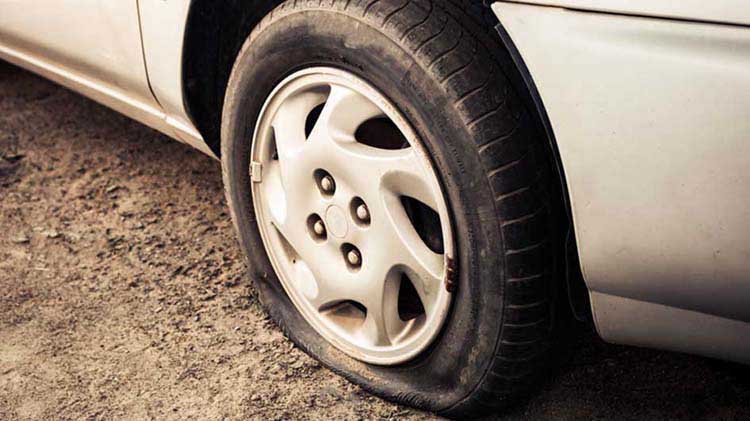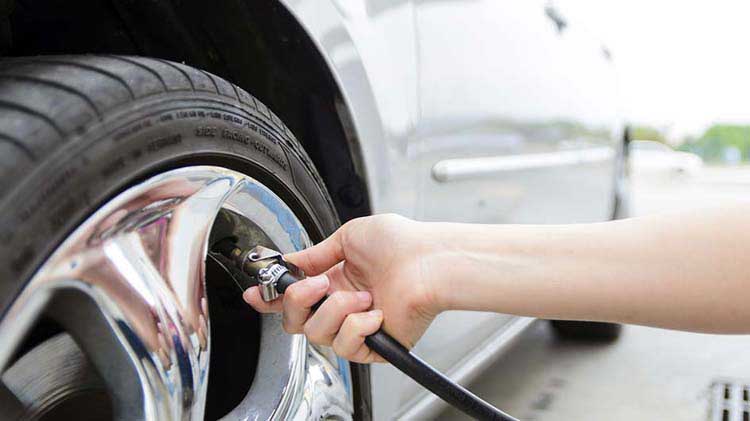Run-flat tires pros and cons
Learn more about run-flat tires, their durability and the pros and cons.
What are run-flat tires?
Run-flat tires are vehicle tires equipped with reinforced sidewalls designed to support the weight of a vehicle even after a puncture. This can provide temporary mobility, allowing drivers to drive a short distance rather than being stranded.
How fast can you drive on run-flat tires?
When punctured, run-flat tires may allow you to drive up to 50 miles at speeds up to 50 mph. This temporary functionality can help you reach a repair shop or safe location for a tire replacement or repair, unlike conventional tires. However, exceeding these limits may damage the tire and compromise safety.
How do run-flat tires work?
Run-flat tire systems are categorized into two types:
- Self-supporting systems — have reinforced sidewalls designed to support the vehicle weight in the event of air pressure loss.
- Support ring systems — utilize a ring made of a rigid material, such as hard rubber, to bear the vehicle's weight if the tire deflates.
Run-flat tire pros
Advantages of run-flat tires include the following:
- Enhanced safety — run-flat tires can provide near-normal handling in the event of a puncture, which may help you maintain better vehicle control.
- Convenience — if you experience a flat tire, you may be able to drive to a service station to have it replaced/repaired, eliminating the need for roadside tire changes.
- Space-saving — the durability of run-flat tires may eliminate the need for a spare tire, freeing up space in your trunk.
- Reliability — run-flat tires are more reliable than conventional tires in puncture incidents, reducing the risk of being stranded.
- Advanced technology — run-flat tires are often equipped with advanced technology features, such as Tire Pressure Monitoring Systems (TPMS), which can enhance safety and performance. This allows for near-normal handling of tires in case of deflation on the road.
Run-flat tire cons
Disadvantages of run-flat tires include the following:
- Reduced fuel economy — the additional weight and stiffer sidewalls of run-flat tires can lead to increased rolling resistance, which translates to a decrease in fuel efficiency.
- Potential ride discomfort — the stiffer construction of run-flat tires can result in a harsher and less comfortable ride, especially on rough roads or over bumps.
- Less responsive handling — run-flat tires can negatively impact handling and responsiveness, making the vehicle feel less agile and maneuverable.
- Uneven wear and tear — due to their unique construction and potential for driving while underinflated, run-flat tires are prone to uneven wear patterns. This can lead to a shorter lifespan compared to conventional tires, often wearing out up to 6,000 miles sooner.
- Increased replacement cost — run-flat tires are typically more expensive to replace than conventional tires due to their specialized technology and construction.
- Limited availability — run-flat tires may not be readily available at all tire shops or service centers, potentially causing delays in repairs or replacements.
- Potential for damage — exceeding the recommended distance or speed for run-flat tires can cause irreparable damage to the tire and potentially other vehicle components.
- No spare tire — many vehicles equipped with run-flat tires don’t come with a spare tire, which can leave drivers stranded if they experience a tire issue that cannot be resolved with the run-flat capability.
- TPMS dependency — a malfunctioning TPMS can lead to driving on a punctured tire unknowingly, potentially causing further damage.
Can run-flat tires be repaired?
Run-flat tires may sometimes be repaired in the event of a small puncture in the tread area. Repairs, such as plugs or patches, can help restore its functionality, but this depends on the type and extent of damage. Large punctures or sidewall damage generally cannot be repaired.
How long do run-flat tires last?
Run-flat tires are generally designed to support a vehicle for a short period of time after losing air pressure. These tires can last between 30,000 to 50,000 miles under normal conditions. However, if driven for a long period of time while the tire is deflated, there could be internal structure damage. Check the manufacturer’s recommendations and talk to a professional to help ensure safety.
For more on tire maintenance and ways to save fuel, consider these fuel efficiency tips. If you have conventional tires, check your tire pressure often. One of the most common causes of tire failure is underinflation, which may be caused by slow leaks. This can lead to a blowout or flat tire. Keeping your tires properly inflated and fixing slow leaks promptly may help decrease potential risks. Taking these measures can also help improve your gas mileage.




